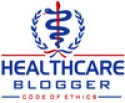The American healthcare system is already by far the most complex and bureaucratic in the world. We were once asked to spend ninety minutes explaining American healthcare to a group of foreign health care executives. Ninety minutes? We probably needed a few weeks. Most other countries have relatively simple systems, whether insurance coverage is provided by a government plan or by private insurance or some combination of these. But in the United States insurance coverage, for those who have it, may be provided by Medicare Parts A, B, C, and D, 50 different state Medicaid programs (or MediCal in California), Medicare Advantage, Medigap plans, the Children’s Health Insurance Plan, the Women, Infants and Children Program, the Veterans Administration, the Federal Employees Health Benefits Program, the military, the hundreds of thousands of employer-provided plans and their insurance companies, or by the individual insurance market. This insurance may be paid for by the federal or state governments, by employers, labor unions or individuals. Some employers’ plans cover retirees, others do not. The result is that the system is pluralistic, mysterious, capricious and impossible for most patients and providers to understand.
Administrative complexity
The administrative complexity is amplified by the multiplicity of insurance plans. About half of all Americans with private health insurance are covered by self-insured plans, each with its own plan design. Employers customize their plan documents, led by consultants who make a good living designing their plans and tailoring their contracts. As one prominent consultant told me recently, if all the self-insured plan documents were piled on a table they would not just exceed the 2,700 pages of Obamacare, they would probably reach the moon. For the rest of the commercially insured population, health plans may be traditional indemnity plans, Preferred Provider Organizations or Health Maintenance Organizations.
The coverage provided by different plans varies dramatically. They may or may not include large or small deductibles, co-pays or co-insurance. Beneficiaries may pay a large, small or no part of their health insurance premiums. Some plans cover dependent family members and children, others do not. The Medicare Part D pharmaceutical benefit plan involves a “doughnut hole,” which will disappear as health reforms are implemented. Surveys have found that few people fully understand their own insurance plans let alone the bigger picture. While health reform takes some steps toward standardization of insurance offerings and improving transparency, overall it is likely to increase complexity.
Physicians may be paid by salary, fee-for-service, or capitation, with “pay for performance” bonuses based on complicated metrics. In order to get paid, most doctors and hospitals have to use many thousands of codes to describe the care they have delivered. Doctors can spend hours a day doing this; hospitals employ tens of thousands of coders; insurance companies and government programs spend a small fortune entering and checking this coding. A substantial proportion of payment claims are disputed, further increasing administrative costs and the “hassle factor.”
Some insurance companies are for-profit, some are not-for-profit. Hospitals may be for-profit, not-for-profit charities or be run by federal government agencies such as the VA or the DOD or by cities.
The administrative complexity exists in the private and public sectors and in both for-profit and non-profit organizations. Medicare is relatively efficient because it has a simple criterion for eligibility – your age (although it also covers people with disabilities). But for many of us administrative complexity is rampant because health insurance is a function of our jobs or our income (or lack of it). Our insurance changes often (because our employers change their plans, because we change jobs or because our income changes), far more often than it does in other countries. As a result we have armies of people who sell insurance, keep track of who is eligible for what, chase, authorize or deny payments, and lob faxes, emails and assorted missives at us and each other. In Los Angeles County, 1,900 people work on nothing but MediCal eligibility with a union-mandated productivity target of completing two forms a day. There are an estimated 150,000 such eligibility workers across the country. The health reform bill proposes to expand Medicaid by 16 million so the number and cost of these workers will surely increase.
Regulatory complexity
Different parts of the healthcare system are managed or regulated by dozens of Federal government and state agencies, including the Department of Health and Human Services, the Center for Medicare and Medicaid Services, the Centers for Disease Control, the Veterans Administration, the Food and Drug Administration, and the Agency for Healthcare Research and Quality. One report claims that the health care reform bill will create 183 new agencies, including state insurance exchanges and a Medicare Independent Payment Advisory Board (IPAB) and the Center for Medicare and Medicaid Innovation.
And then there are the acronyms. If you don’t know them you will not understand much of the health policy debate: PPACA, DHSS, FDA, CMS, VA, CDC, AHRQ, SRG, MLR, HMO, PPO, PBM, COBRA, P4P, CER, EMR, HIT, DRG, FEHBP, WIC, CHIP, DSH, MMA, and many more.
I believe that this complexity is a major reason why we have (and this is very well documented) the most expensive, inequitable, inefficient and unpopular healthcare system of any developed country, with poor to mediocre outcomes. The problem is not the doctors or the hospitals, but the system. Reimbursement, with its many thousands of points of public and private sector payment and the mindboggling payment rules, creates a bow wave of administrative costs and many perverse incentives. And these costs are the incomes of powerful interests who fight to preserve them.
The American “system” is exponentially more complicated than the systems in other countries – and the reforms will make it even more complicated. Unfortunately reform that would simplify the system is probably not politically feasible. A benign dictator might scrap the system and start over with a much simpler system. But in a democracy, with powerful interests and 17% of our economy involved, “you can’t get there from here.” We have to build on what we have, heaping complexity on complexity.
It is therefore no wonder that surveys find most people (including, it would appear, many members of Congress) understand very little about the health care system let alone health care reform. A recent Harris poll asked people which of 18 items are or are not in the reform bill. Modest majorities were able to give the right answer for only 4 of the items. And pluralities got the answer wrong on nine of the items. For example pluralities believed that the bill includes higher income taxes for the middle class, new ways to ration care, a new government run health plan, cuts in Medicare benefits, increased payroll taxes and “death panels”.

 RSS Feed
RSS Feed































